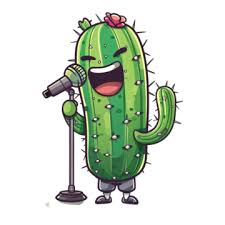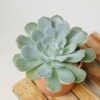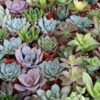How to Arrange and Organize Feng Shui Items in Your Home: A Comprehensive Guide

Feng Shui, an ancient Chinese practice that revolves around the arrangement of your environment to promote harmony, balance, and positive energy flow (or chi), plays a crucial role in the way people design and organize their homes. By carefully selecting and positioning Feng Shui items, you can enhance your home’s energy, improve your well-being, attract good fortune, and create a peaceful and prosperous living environment. This article will guide you through the steps and principles of arranging Feng Shui items in your home, covering everything from selecting the right items to the best positions for them in different areas of your living space.
Understanding Feng Shui Principles
Before diving into how to arrange and organize Feng Shui items in your home, it’s essential to understand the basic principles behind Feng Shui. The practice is based on the belief that everything around us is imbued with energy that influences our lives. By ensuring that the energy flow in your home is positive and balanced, you can attract happiness, prosperity, and health.
The fundamental concept of Feng Shui is the flow of chi, which represents the life force or energy that exists within and around us. The positioning of objects in your home can either block or enhance the flow of chi, which is why Feng Shui emphasizes the importance of careful arrangement. In Feng Shui, every area of your home corresponds to a specific aspect of your life, such as wealth, health, relationships, and career. These areas are mapped using the Bagua, a Feng Shui energy map, which helps to identify where to place specific items to attract positive energy to different aspects of your life.
Selecting Feng Shui Items for Your Home
Feng Shui items are objects or symbols believed to bring positive energy, good luck, and protection. The right items can help enhance various areas of your life. Below are some popular Feng Shui items and their purposes:
1. Lucky Bamboo
One of the most widely known Feng Shui items, the lucky bamboo is considered a symbol of prosperity, wealth, and growth. It is often used in homes and offices to promote positive energy. Depending on the number of stalks, lucky bamboo can attract different types of energy:
- 1 stalk: Represents unity and a strong foundation.
- 2 stalks: Represents love and romance.
- 3 stalks: Attracts good health, wealth, and happiness.
- 5 stalks: Represents abundance and wealth.
2. Crystals and Gemstones
Crystals and gemstones are used in Feng Shui to enhance the energy flow and bring specific benefits depending on the type of crystal. Common crystals and their meanings include:
- Amethyst: Promotes peace, tranquility, and spiritual growth.
- Rose Quartz: Enhances love, compassion, and harmony in relationships.
- Citrine: Attracts wealth, success, and abundance.
- Clear Quartz: Amplifies energy and promotes clarity and focus.
3. Wind Chimes
Wind chimes are believed to activate the flow of energy and ward off negative vibes. They are typically hung near windows or doors to create a harmonious atmosphere. The sound of wind chimes is said to bring good fortune and attract positive energy into your home.
4. The Laughing Buddha
A common symbol in Feng Shui, the Laughing Buddha is often placed in the home to attract happiness, abundance, and good fortune. It is best placed in the living room, facing the entrance, or in the wealth corner of your home.
5. Water Features
Water symbolizes abundance and prosperity in Feng Shui. The placement of water features, such as fountains or aquariums, is believed to enhance the flow of positive energy, bringing good luck and wealth. Be sure to keep the water clean and flowing smoothly, as stagnant water can symbolize the opposite – stagnation and missed opportunities.
6. Mirrors
Mirrors are powerful tools in Feng Shui, as they are believed to reflect energy and enhance the flow of chi. However, the placement of mirrors should be done carefully, as they can also reflect negative energy if positioned incorrectly. Mirrors should not face the front door, as they may reflect positive energy away from the home. They are best placed in areas where they can expand space and light.
The Bagua Map: Understanding the Energy Centers of Your Home
The Bagua Map is a Feng Shui tool used to identify the different energy zones of your home. Each area of your home corresponds to a specific aspect of life, and the placement of Feng Shui items in the right zones can bring balance and harmony to those areas. Below is an overview of the nine areas in the Bagua Map and the Feng Shui items that correspond to each:
1. Wealth and Prosperity (Southeast Corner)
This area is associated with wealth, abundance, and financial success. The best Feng Shui items for this zone are:
- Lucky Bamboo with 8 stalks.
- Citrine crystals or other wealth-attracting stones.
- A small water fountain to enhance the flow of abundance.
2. Fame and Reputation (South)
The South area represents fame, recognition, and reputation. To enhance this area, consider placing:
- Red items such as candles, vases, or fabrics, as red is the color of fame.
- A vision board with your goals and aspirations.
- An image of something that represents your achievements and success.
3. Love and Relationships (Southwest)
The Southwest area governs love, relationships, and marriage. Feng Shui items for this area include:
- Rose Quartz crystals to enhance love and harmony.
- Pairs of objects such as two candles, two figurines, or a pair of plants to symbolize balance in relationships.
- A photograph of a happy couple or wedding rings.
4. Family and Health (East)
The East section is associated with family and overall health. To support well-being in this area, try placing:
- Green plants or a healthy indoor garden to promote growth and vitality.
- Wooden items or natural materials, as wood represents health and family.
- A picture of family members or a symbol of good health.
5. Center (The Health and Well-Being Zone)
The center of your home represents overall balance and health. Keep this area clear of clutter and enhance it with:
- A round or circular object, as it symbolizes completeness and balance.
- Earth elements like crystals, ceramic items, or pottery to stabilize the energy.
6. Children and Creativity (West)
This area governs creativity, children, and new ideas. Feng Shui items to place here include:
- White or metallic-colored objects.
- Family portraits or images of children to promote positive energy.
- Creative items such as art supplies or instruments.
7. Knowledge and Wisdom (Northeast)
The Northeast corner is connected to knowledge, education, and self-cultivation. Feng Shui items for this zone include:
- Bookshelves with books on subjects of personal development.
- Crystals such as Amethyst to enhance spiritual growth.
- A desk or workspace where you can focus on learning or meditation.
8. Career and Life Path (North)
The North area is linked to career and personal growth. To enhance your career path, place:
- Black or dark blue items.
- A water feature such as a small fountain or aquarium.
- A picture of a successful moment in your professional life.
9. Helpful People and Travel (Northwest)
The Northwest area is associated with helpful people, mentors, and travel. Feng Shui items to use in this area include:
- A globe or map to represent travel and exploration.
- Metal objects such as brass statues or wind chimes.
- Items that represent helpful individuals or guidance in your life.
How to Organize Feng Shui Items in Your Home
Once you’ve selected your Feng Shui items, the next step is organizing and arranging them effectively. Here are some key tips for arranging your Feng Shui items:
1. Keep Clutter to a Minimum
Clutter disrupts the flow of positive energy and can create stress and confusion. Keeping your home clean and organized allows energy to flow freely. Make sure to regularly declutter and organize spaces, especially in important Feng Shui zones.
2. Use the Right Number of Items
In Feng Shui, the number of items you use in a particular area can have significance. For example, if you’re using bamboo stalks, remember that certain numbers attract specific types of energy (e.g., 8 stalks for prosperity). Similarly, two items can symbolize balance, while three represent harmony and completeness.
3. Position Items to Face the Right Direction
Ensure that Feng Shui items such as plants, mirrors, and artwork face the right direction to maximize their effect. For instance, mirrors should reflect positive energy, and plants should be placed in a way that enhances growth and vitality.
4. Regularly Clean and Energize Your Items
To maintain the positive energy of your Feng Shui items, it’s important to regularly clean and refresh them. This includes cleaning crystals, washing plants, and ensuring that water features remain clean and flowing.
Conclusion: Creating a Harmonious Home with Feng Shui
Arranging and organizing Feng Shui items in your home is a powerful way to enhance the flow of positive energy, attract prosperity, improve relationships, and promote overall well-being. By carefully selecting the right items and placing them in the appropriate areas based on the Bagua map, you can create a balanced, harmonious living space that supports your goals and aspirations. With attention to detail and a thoughtful approach to Feng Shui, your home can become a sanctuary of positive energy and good fortune.

